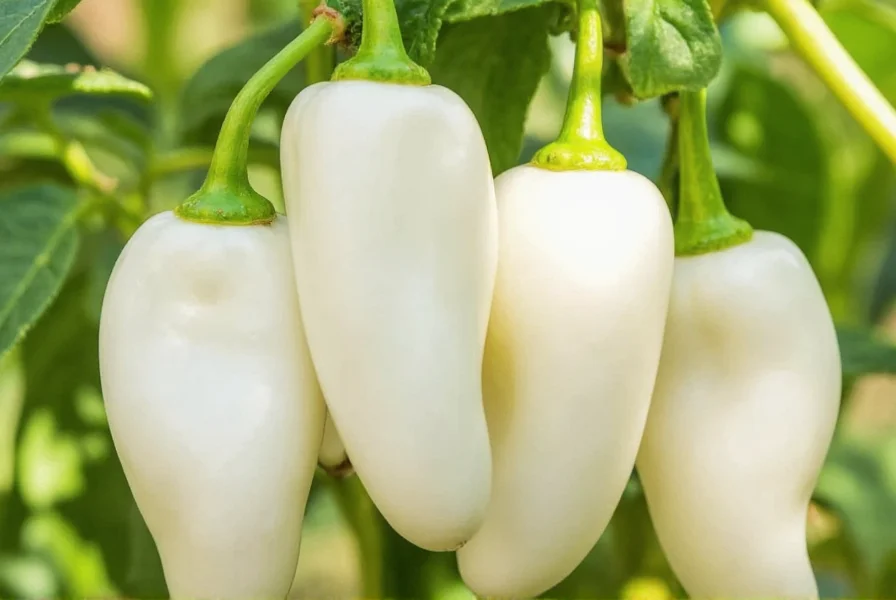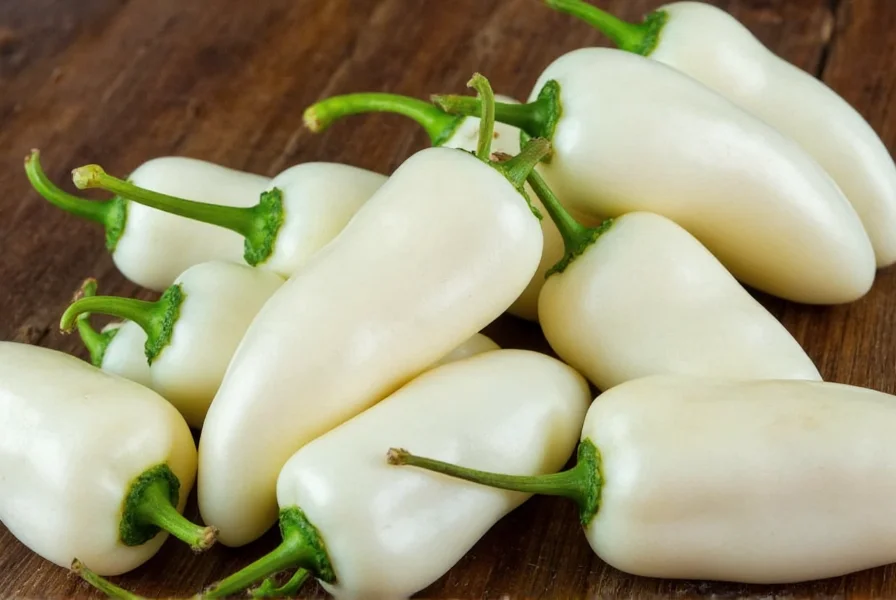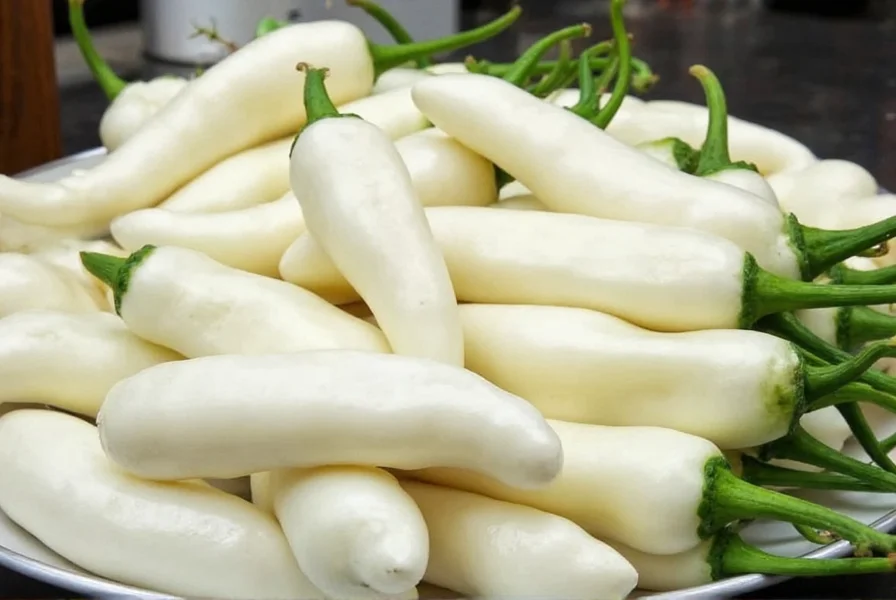Unlike their more common counterparts, white peppercorns offer a cleaner, earthier taste with less pungency and heat. This distinctive spice has been used in culinary traditions worldwide for centuries, particularly in dishes where a subtle pepper flavor without visible specks is desired. Professional chefs often prefer white pepper for light-colored sauces, creamy soups, and delicate seafood preparations where black pepper flecks would be visually disruptive.

Understanding White Pepper Processing
The production process for white pepper differs significantly from other pepper varieties. While black pepper consists of unripe berries dried with their outer layer intact, white pepper comes from fully ripe berries. These ripe berries are soaked in water for about a week, which causes the outer skin to ferment and loosen. The outer layer is then removed through rubbing or mechanical means, leaving only the inner seed. This seed is subsequently dried, resulting in the characteristic pale color of white peppercorns.
This unique processing method affects not only the appearance but also the chemical composition of the pepper. The removal of the outer layer eliminates certain compounds found in black pepper, creating a different flavor profile that many describe as mustier and less complex but with a cleaner finish.
White Pepper vs Other Pepper Varieties
Understanding the differences between pepper varieties helps explain why white pepper remains a staple in many professional kitchens despite being less common in home pantries. The key distinction lies in both processing methods and resulting flavor characteristics.
| Pepper Type | Processing Method | Flavor Profile | Best Culinary Uses |
|---|---|---|---|
| White Pepper | Fully ripe berries soaked and outer layer removed | Earthy, musty, less pungent, cleaner finish | Cream sauces, light soups, mashed potatoes, delicate fish dishes |
| Black Pepper | Unripe berries dried with outer layer intact | Sharp, pungent, complex, floral notes | Most savory dishes, meats, robust sauces, general seasoning |
| Green Pepper | Unripe berries preserved through brining or freeze-drying | Fresher, grassier, milder heat | Seafood, light sauces, modern cuisine, pickling |
| Red Pepper | Fully ripe berries dried with outer layer intact | Sweeter, fruitier, less heat | Fruit-based sauces, decorative garnishes, specialty dishes |
Culinary Applications of White Pepper
Chefs value white pepper for specific culinary applications where its unique properties shine. In French cuisine, white pepper traditionally appears in béchamel and other white sauces where black pepper specks would be visually unappealing. Many Chinese restaurants use white pepper in soups and stir-fries, particularly in dishes featuring seafood or poultry.
When cooking with white pepper, consider these practical tips for optimal results:
- Add white pepper toward the end of cooking to preserve its delicate flavor
- Use slightly more white pepper than black pepper when substituting (about 25% more) as it has less immediate heat
- Grind white peppercorns just before use for maximum flavor impact
- Store in an airtight container away from light and moisture to maintain potency
Nutritional Profile and Potential Health Benefits
Like other pepper varieties, white pepper contains piperine, the compound responsible for pepper's characteristic heat and many of its potential health benefits. While research primarily focuses on black pepper, white pepper shares many similar properties due to their common origin.
Preliminary studies suggest that piperine may enhance nutrient absorption, particularly of curcumin in turmeric. White pepper also contains trace amounts of vitamins K and C, along with minerals like manganese and iron. However, since most people use pepper in relatively small quantities, it shouldn't be considered a significant nutritional source.
Common Misconceptions About White Pepper
Several myths persist about white pepper that deserve clarification. Many believe white pepper is milder than black pepper, but this isn't entirely accurate. While white pepper has less initial pungency, its heat builds more gradually and can feel more intense over time. Others claim white pepper is simply bleached black pepper, but authentic white pepper undergoes the natural soaking and removal process described earlier.
Another common misconception is that white pepper lacks the complexity of black pepper. While it does have a different flavor profile, white pepper offers its own nuanced characteristics that work better in certain culinary applications. Understanding these distinctions helps cooks make informed choices about which pepper variety best suits their specific dish.
Selecting and Storing White Pepper
For the best culinary results, select whole white peppercorns rather than pre-ground powder whenever possible. Whole peppercorns maintain their flavor significantly longer. Look for uniform, pale beige peppercorns without dark spots, which indicate incomplete processing.
Store white peppercorns in an airtight container away from direct light and heat sources. Properly stored, whole white peppercorns retain their flavor for up to two years, while pre-ground white pepper loses potency within three to six months. Consider buying smaller quantities more frequently if you don't use white pepper regularly to ensure maximum freshness.

White Pepper in Global Cuisines
White pepper plays significant roles in various culinary traditions around the world. In Scandinavian cooking, it features prominently in dishes like meatballs and gravlax. Vietnamese cuisine uses white pepper extensively in marinades and dipping sauces. Many traditional European recipes, particularly from France and Germany, specify white pepper for certain sauces and soups.
Understanding these cultural applications can inspire creative uses in your own cooking. For example, adding a small amount of white pepper to potato salad provides a subtle heat without visible specks. It also works well in light-colored salad dressings where black pepper would be visually distracting.
Frequently Asked Questions
Can I substitute white pepper for black pepper in recipes?
Yes, you can substitute white pepper for black pepper, but use about 25% more white pepper as it has less immediate heat. Keep in mind that white pepper offers a different flavor profile—more earthy and musty with a cleaner finish—so the final dish will have a slightly different taste. White pepper works best in light-colored dishes where black pepper specks would be visually unappealing.
Why does white pepper taste different from black pepper?
White pepper tastes different because it undergoes a different processing method. While black pepper consists of unripe berries dried with their outer layer intact, white pepper comes from fully ripe berries that are soaked and have their outer layer removed. This process eliminates certain compounds found in the outer layer of black peppercorns, resulting in a more earthy, musty flavor with less initial pungency but potentially longer-lasting heat.
Is white pepper less spicy than black pepper?
White pepper isn't necessarily less spicy, but it has a different heat profile. It delivers less immediate pungency than black pepper but the heat builds more gradually and can feel more intense over time. Many people perceive white pepper as milder because of its less aggressive initial impact, but in reality, it contains similar levels of piperine, the compound responsible for pepper's heat.
How long does white pepper stay fresh?
Whole white peppercorns stay fresh for up to two years when stored properly in an airtight container away from light and heat. Pre-ground white pepper loses potency much faster, typically within three to six months. For best flavor, purchase whole peppercorns and grind them as needed. Proper storage is crucial since white pepper's delicate flavor compounds degrade more quickly than those in black pepper.
Are there any health benefits to using white pepper?
White pepper contains piperine, which may enhance nutrient absorption and has antioxidant properties. Some studies suggest piperine can improve the bioavailability of certain nutrients and compounds like curcumin in turmeric. White pepper also contains trace amounts of vitamins K and C, along with minerals like manganese and iron. However, since most people use pepper in small quantities, it shouldn't be considered a significant nutritional source.











 浙公网安备
33010002000092号
浙公网安备
33010002000092号 浙B2-20120091-4
浙B2-20120091-4